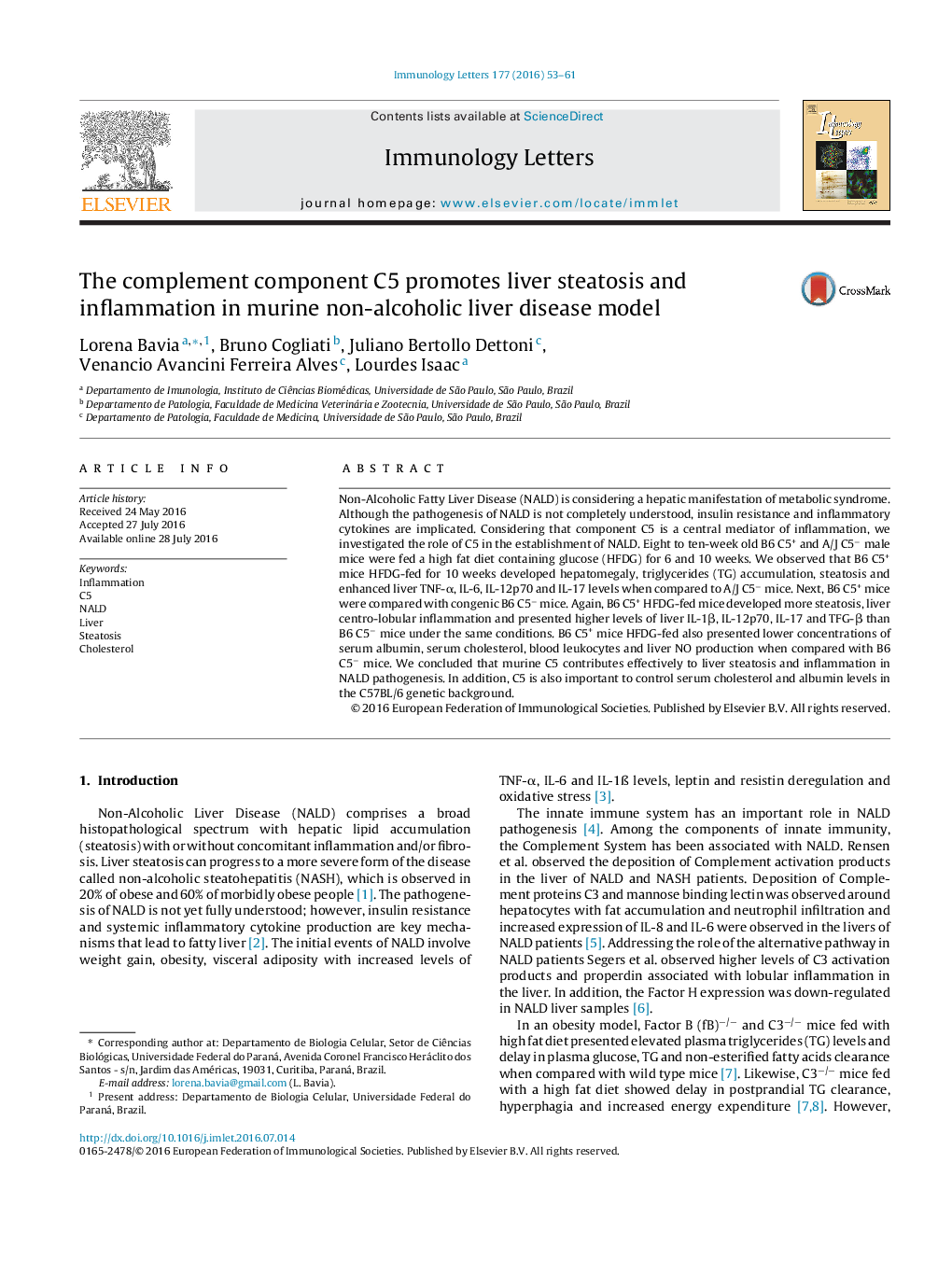| Article ID | Journal | Published Year | Pages | File Type |
|---|---|---|---|---|
| 3355234 | Immunology Letters | 2016 | 9 Pages |
•Liver steatosis development depends on mouse genetic background in murine NALD model.•Complement component C5 induced liver inflammation and liver steatosis in murine NALD model.•Component C5 controls serum cholesterol levels in liver diseases high fat diet-induced.
Non-Alcoholic Fatty Liver Disease (NALD) is considering a hepatic manifestation of metabolic syndrome. Although the pathogenesis of NALD is not completely understood, insulin resistance and inflammatory cytokines are implicated. Considering that component C5 is a central mediator of inflammation, we investigated the role of C5 in the establishment of NALD. Eight to ten-week old B6 C5+ and A/J C5− male mice were fed a high fat diet containing glucose (HFDG) for 6 and 10 weeks. We observed that B6 C5+ mice HFDG-fed for 10 weeks developed hepatomegaly, triglycerides (TG) accumulation, steatosis and enhanced liver TNF-α, IL-6, IL-12p70 and IL-17 levels when compared to A/J C5− mice. Next, B6 C5+ mice were compared with congenic B6 C5− mice. Again, B6 C5+ HFDG-fed mice developed more steatosis, liver centro-lobular inflammation and presented higher levels of liver IL-1β, IL-12p70, IL-17 and TFG-β than B6 C5− mice under the same conditions. B6 C5+ mice HFDG-fed also presented lower concentrations of serum albumin, serum cholesterol, blood leukocytes and liver NO production when compared with B6 C5− mice. We concluded that murine C5 contributes effectively to liver steatosis and inflammation in NALD pathogenesis. In addition, C5 is also important to control serum cholesterol and albumin levels in the C57BL/6 genetic background.
